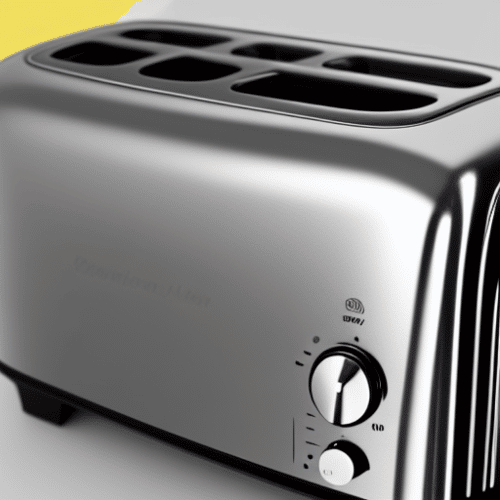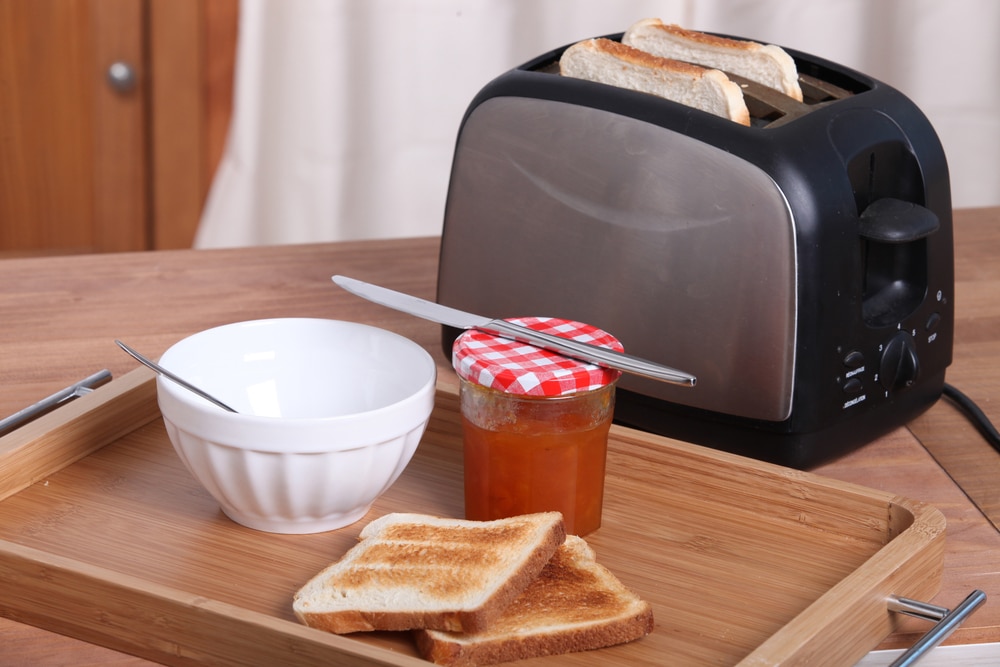Last Updated on
We all make assumptions about the numbers on our toasters and how they define the heat of our toasting devices or how well-cooked our finished toast might be. However, the reality is that most people don’t actually know what toaster numbers really mean.
So what do the numbers mean on a toaster? Some people believe that the numbers on a toaster refer to shades of brown or browning levels, while others assume that a toaster is connected to a timing chip which you can set to two or three minutes, depending on your bread and toast preferences.
Here’s what you need to know about the numbers on your toaster and how they really influence your toast results.
Does anyone actually know what the numbers are on a toaster?? Is it how many minutes or just a level of toasty-ness or what
— sun (@allii_sunn) June 13, 2020
The Numbers on Your Toaster
The first thing you need to know is that the number on a toaster dial can differ depending on the type of toaster you have. The numbers on a toaster could refer to multiple different things, depending on whether you have a timer toaster, a capacitor toaster, or even a toaster with a bimetallic strip.
Timer Toaster
A timer toaster is often a more expensive, intelligent device equipped with its own timing chip. Modern toasters that cost a few hundred dollars will use a mechanical timer to determine exactly how long they should toast your bread. This means that the numbers on your toaster refer to minutes, not levels of toasting.
Why have I only just found out that the numbers on a toaster are for the number of minutes the bread is toasted….. and not how toasty it is!!! 🤯 #mindblown pic.twitter.com/TOSeefQCZD
— Carl M (@AirForce_Carl) January 7, 2020
Capacitor Toaster
Alternatively, if you’re one of the many toast lovers who have a capacitor toaster, the numbers on your toaster dial have a different meaning. The toaster dials on the capacitor toaster refer to charging elements within the device. Most toasters in the modern world use a circuit as a timer. When your toasters reach a certain voltage, the circuit will cut off, and your toast pops up.
When you change the dial on your capacitor toasters, you’re defining the toastiness of your bread not with timing chips but with how long your capacitor can charge for. This means that setting the number dial to 2 won’t necessarily lead to two minutes of toasting like it might with more expensive toasters.
The Cuisinart CPT-122 is likely a capacitor toaster, which means the number correlates to the voltage at which the toaster ejects the bread.
— couragefoal 🤠 (@bashfoal) May 6, 2020
Bi-metallic Strip Toasters
Slightly older toasters generally have a different toasting method, which involves a bimetallic strip for browning control. These toasters use a bimetallic strip that curls up as the device heats. The bimetallic strip is made of two pieces of metal, which causes the metal to expand at a specific rate. Pushing the toaster lever down connects two pieces of wire to begin the circuit. The bimetallic strip continues to bend until the circuit is no longer connected. At this point, the toaster pops your toast out.
In a bimetallic toaster, the dial and different numbers on your toaster mean electricity level. So, you turn the dial to control the amount of electricity sent through the switch. A lower number on the dial leads to a higher current. This triggers the device to pop your toast a lot faster.
This kind of toaster is a little less common today, as they’re not as efficient as the more modern appliance options, which come with various circuit and timer tools to control the number settings.
This is a common misconception, but most toasters do not have any kind of timing mechanism. The number is a setting for how far the bimetallic strip inside the toaster must bend, ie what temperature it must reach, before it turns off.
— CreationOperator (@CrtnOperator) June 6, 2021
Which Toaster do You Have?

The numbers on the toaster really mean in your household will depend on the machine you have. The best way to figure out what kind of toaster you’re using is to check your toaster manual. Most companies will log information about managing the toaster settings in how to use your device.
Check your manual for instructions on how your bread gets toasted with your new device. If the machine toasts each slice of bread based on a timer, then you know you’ve toasted your bread with a timer-based toaster. If the numbers of your toaster refer to electric current, you’ll be using a device where the curve of a metallic circuit or another kind of circuit control your toast.
Why Aren’t Toaster Results Always the Same?
So, if you confirm that the numbers on your toaster log the amount of time you’re going to be toasting each slice of bread, why is it that your device won’t always deliver the same results? Even if you have a timer-based toaster which apparently allows you to control the minutes, you cook your slice of bread. As a result, you might notice the sign of a burn or two on your toast at times.
Number 1 on dial of toaster almost cremates bread. Good job Granny taught me to scrape off the burnt bits & eat it anyway. #ToasterIsDying
— Jana (@jmr73) April 28, 2014
Timing is Off
If this happens, it’s worth conducting an experiment where you watch the toaster for five minutes to see whether it’s starting to pop the toast at the wrong time. This might not be as fun as watching a YouTube video, but it will show you if your toaster isn’t working as it should be.
Bread Used
If the toaster follows the specific amount of time you set for it, this still doesn’t mean you won’t toast your bread at different rates in the future. That’s because toasting is a process that involves drying and cooking the bread with heat at the same time. So whether you have a bimetallic strip toaster or a timer toaster, the bread you use will affect your results.
The specific amount of moisture in your bread will determine how the heat affects your toast. Even if you toast four pieces of bread at the same heat and dial setting, you might get toast that looks as though it came from four different toasters. This has nothing to do with the specific voltage of your toaster or the dial controls but the moisture in your bread.
Just the Way You Like It
Remember, no matter what you read on the internet, the numbers on a toaster are just there to help you guide your toasting preferences.
After months of highs and lows I've decided on number 3 as my perfect toaster setting #whatAjourney
— Boring Mark Flanagan (@Marv_Flanagan) May 25, 2014
Get the Heat Right on Both Sides
Ultimately, you’ll find a number that works for you with each of the toasters you buy, and it won’t really matter what the numbers mean. As long as you get the same amount of heat for each slice of bread you toast, you should get similar results.
Toasted Right Most of the Time
As even a cursory glance at the internet will show, you can’t control all aspects of toasting. Even if you know what the numbers on the toaster mean, your toast might pop up differently from time to time. The best thing you can do is choose a setting that delivers the right results most of the time. If you notice major fluctuations in your toast, you can consider getting a refund.
Make the Perfect Toasties
What do the numbers mean on a toaster? Now you know that they will help you with your toasting preferences. Remember that the first thing you need to do is look at your instruction manual to see the specifics of your device. Knowing this means you’re one step closer to getting perfect toast every time.
How do you like your toast? Tell us all about it below.
Rebekah is a writer who loves to explore new products and find hacks that make life easier. She has a knack for all things home improvement, health and fitness. So you’ll often find her on Pinterest or browsing Houzz for ideas.
She’s always looking for the next thing to fix up around the house or what gadget might be just right for her lifestyle. Rebekah enjoys exploring new recipes, taking care of her family, and making sure she stays healthy with regular workouts at the gym.



